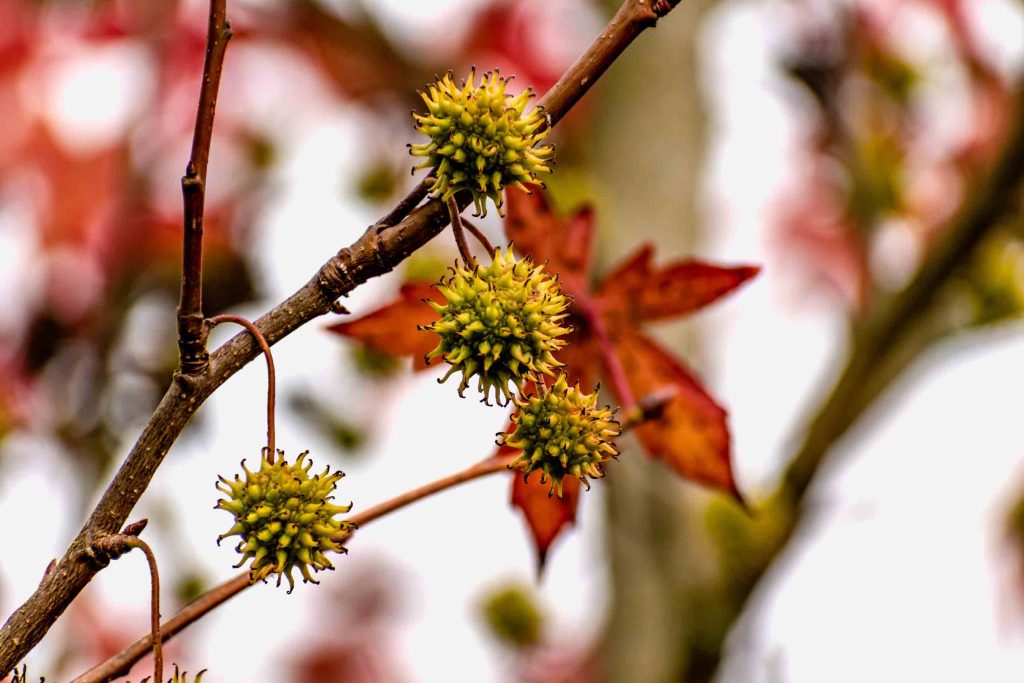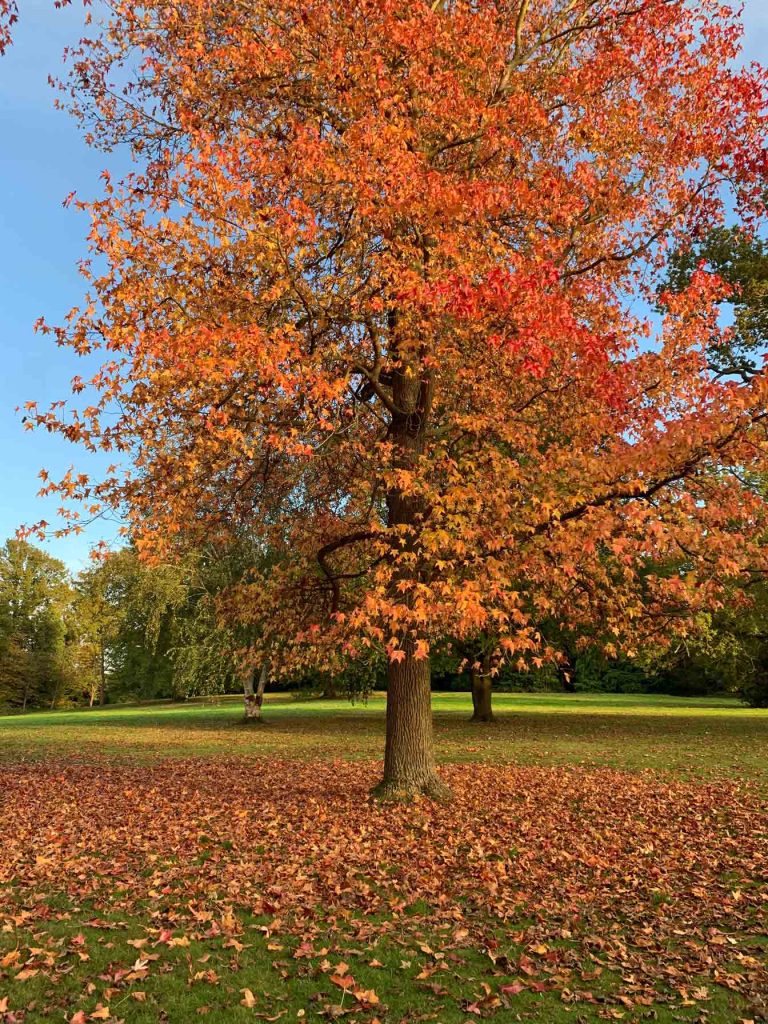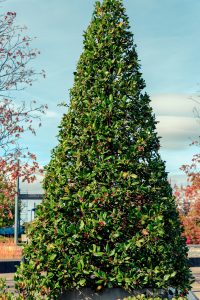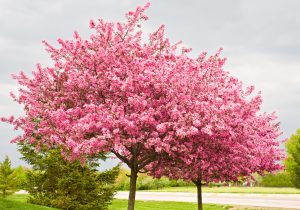The Sweetgum Tree’s Beauty and Challenges in Maryland
The Sweetgum (Liquidambar styraciflua) is a staple in Maryland’s urban and suburban landscapes, easily identified by its star-shaped leaves and spiky seed balls. Valued for its fast growth and brilliant fall foliage, the Sweetgum brings vibrant color and quick shade to residential properties, but it also requires professional oversight to manage its surface roots and seed litter.
Growth and Environmental Preferences
Sweetgum trees grow rapidly, often reaching 60 to 80 feet in height with broad, pyramidal crowns. They thrive in full sun and a range of soils but prefer moist, well-drained conditions. Their shallow root systems often surface, raising sidewalks and disrupting lawns if left unmanaged.

Seasonal Appeal and Wildlife Benefits
Sweetgum leaves turn vivid shades of red, orange, and purple in the fall, creating a dramatic seasonal display. Its seeds, while sometimes seen as a nuisance, feed birds and small mammals, contributing to local ecosystems.
Maintenance Needs and Potential Issues
Sweetgum trees can become problematic when their roots damage hardscapes or when their seed balls create slipping hazards. They are also prone to issues like bacterial leaf scorch and root stress in compacted soils.
Professional care, including root pruning, soil aeration, and health monitoring, helps mitigate these challenges. Selective pruning also improves airflow and reduces the risk of branch failure.
Making Sweetgum Work for Your Property
Sweetgum trees remain a valuable landscape choice for their color and ecological benefits when managed by professionals. Addressing root and litter concerns early ensures they remain assets rather than liabilities.
For expert Sweetgum care, visit Prestige Tree Experts or call 240.281.3334.










